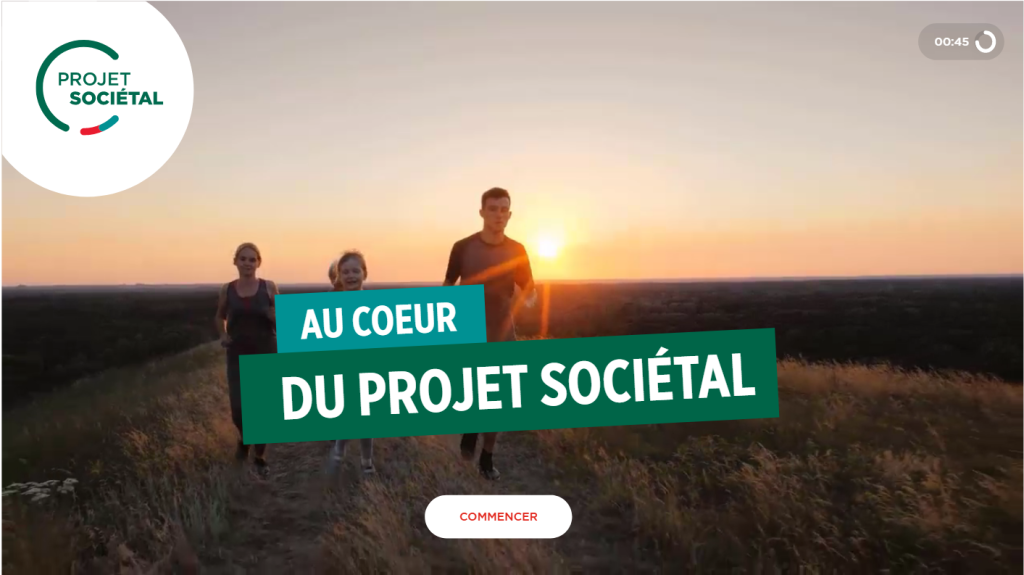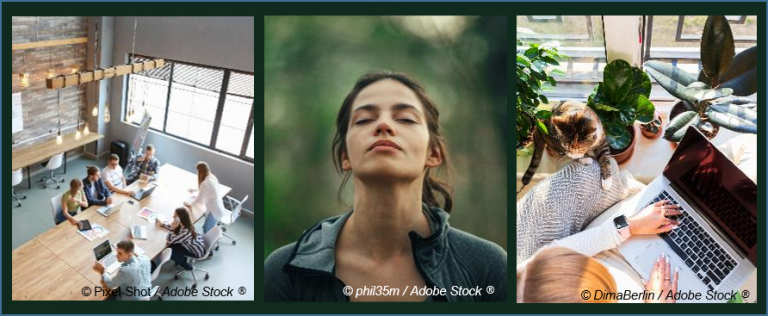The Learner Experience approach at the heart of the CSR training strategy
“100% of employees and elected representatives trained in CSR issues”. This is one of the major commitments of the Crédit Agricole Group’s Corporate Social Responsibility Project, which aims to support the major changes in our society.
As the Group’s University, our role is to support these transformations. This is why we have set up a unique system: a learning environment entirely dedicated to this project. The aim is to raise awareness, mobilise employees and elected representatives, individually and collectively, and train them in the changing nature of the business.
How did we design this major and wide-ranging training scheme ? How did we take into account the Learning Experience with the ambition is to train more than 140,000 employees and elected representatives? How can we commit to the long term and offer a scalable system?
Answers with Camille Besson, Training Designer, Dorothée Cavignaux-Bros, Training Engineer and PhD in Education and Training Sciences and Faty Drider, Training Engineer.
An approach centred on the learner experience…
For the outset, it seemed important to us that the result should embody the principles of the Societal project and be part of a CSR approach. Our intentions are to demonstrate sobriety and frugality, to capitalise on good practices and existing resources, tried and tested by the Group, and of course, Je propose de simplifier : to take Into account stakeholders: sponsors, testers, learners, training departments, etc.
It was therefore logical to begin our work with codesign workshops. With the help of personae representing our main training populations (employees, elected representatives, directors, managers), we formulated support hypotheses and we prototyped training systems. During design workshops, these courses were tested with learners. Their feedbacks enabled us to adjust the systems we had imagined, to real-life usage.
At the same time, we were asked by our internal clients to design and produce a first deliverable: a core module “At the heart of the Societal Project”. This awareness-raising module aims to educate employees and elected representatives about the main societal issues and to present the responses provided by the Group. It was co-constructed with various players in the Group, the subsidiaries and the Regional Banks. It aims to mobilise learners around a common history and story, to (re)give meaning to our commitments in the context of the new corporate strategy.
We have also created business training courses (Business and Public Authority Managers, Agricultural Advisors, Individual Advisors, etc.).
Whether it is a question of measures aimed at all employees and elected representatives, or at specific professions, this approach of co-construction, inclusion and sharing has been our leitmotiv.
The result is a new device with:
- A variety of resources: podcasts, webinars, e-learning, videos, articles, glossary…
- Freedom of navigation and consultation for the learner,
- Multiple possibilities of deployment and activities for the training departments of the entities according to their schedule and the implementation of the societal project in their territory.
To facilitate access to all these resources, we have created a dedicated Learning Universe.
Co-creation of a Learning Universe
To create this universe, we set up a multidisciplinary project group to address all the dimensions, whether graphic, ergonomic, technical or educational. The objective was to centralise all the educational deliverables in a single space, but also to offer a fluid, useful, engaging and remarkable experience.
As part of our LXD (Learner eXperience Design) approach, we carried out a large-scale test of the “At the heart of the societal project” module and the pages of the learning universe with a representative panel of learners. This was a great opportunity to get precise feedbacks on the module and to adjust our work to meet the needs as closely as possible.
The scientific approach
In a scientific and methodological approach, a protocol was created beforehand to prepare for this test, which made it possible to specify its scope and method.
We therefore chose a mixed method to collect both quantitative and qualitative data. Several tools were used: the Attrakdiff* UX (User eXperience) questionnaire and our internal tool: the learner experience grid. We designed a questionnaire for each resource tested.
The test protocol for the learner
First, following the module, the learner answered questions on structure, cognitive cost (concentration, mobilisation of resources), and understanding of the issues and pillars of the societal project. Then, the questionnaire included items on the learner’s perception of his or her role and commitment to the project.
In a second step, he was guided to the Societal Project Universe page in order to test it and to answer a second questionnaire on the ergonomics and usability of the page.
The specifics of test in an unusual learning space
As the structure of the universe was new, it was important to guide the learners very precisely. A simplified and signposted test path was put forward, focusing first on the titles, the organisation and the clickable zones. Our intention was to test the ergonomics of the page, i.e. the adaptation of a learning environment to the user’s needs. Indeed, if the learner is comfortable navigating the page, he will be able to access the content more easily and free up a significant load: the extrinsic load.
The next part of the questionnaire dealt with usability. Usability is defined as “the degree to which a product can be used, by identified users, to achieve defined goals with effectiveness, efficiency and satisfaction, in a specific context of use”. Usability thus refers to the ability of a product to meet user expectations.
These questionnaires were supplemented by focus groups of 6 to 8 learners who had tested the device and answered the questionnaires.
Thanks to the support of the Caisse Régionale de Normandie’s teams, the selection of testers, the communication relays and the follow-ups, we obtained a significant response rate on the questionnaire associated with the e-learning module.
Results and conclusion
The large-scale test enabled us to test our first deliverable and the learning space dedicated to the Societal Project; the results of the questionnaires and focus groups highlighted the strong points and areas for improvement.
In quantitative terms, 85% of respondents recommended the module as is.
Qualitatively, learners expressed in particular
- The importance of allocating dedicated time to consult resources;
- Their necessary animation, for example through a managerial relay;
- The need to make a link with one’s professional practice
Consideration of learner feedback was prioritised according to its feasibility. For example, we have:
- Reduced the dynamic backgrounds, in order to make the module easier to read and understand.
- Clarified some key concepts and supported some examples.
- On the educational level, and in order to facilitate the retention of information, we have integrated training quizzes and a summary sheet at the end of the module.
- Finally, in response to the demand for contextualisation and a link with personal and professional practice and environment, we have added a link to the Ademe simulator to measure one’s own carbon footprint.
The page was also adjusted. It is a dynamic space that will live on according to learners’ uses and experiences.
The learning world is a learning, moving, living and adaptive environment, just like the themes that are dealt with. This is what makes this project demanding, stimulating and exciting.
#Ensembleonyarrivera
Camille Besson, Training Designer
Dorothée Cavignaux-Bros, Training Engineer and PhD in Education and Training Sciences.
Faty Drider, Training Engineer
*Attrakdiff: Attrakdiff is a user experience evaluation questionnaire (translation Lallemand et al., 2015). This questionnaire is a reference tool in UX. It asks the user to spontaneously associate words with the page (e.g.: is the page rather pleasant or unpleasant?).








